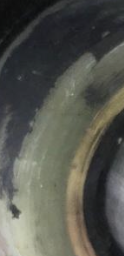Weekly Update - Drives Reveal Big Problems
- Chris Leigh-Jones
- Feb 24, 2024
- 5 min read
Blogging has been slow these few weeks, primarily as we have had some troubling results from sea trials. We wanted to better understand before committing to writing.
The problem became apparent at sea trials and was associated with severe drive line vibrations at idle speed and high power, ahead.
I can only repeat some earlier thoughts for anyone messing around with mechanical things - BEFORE WORK, READ THE INSTALLATION MANUAL. (See enclosed link HERE, Construction tip No 10). Not every report should say the garden is rosy; this is one such moment.
Vibration at Idle Speed
Let us start firstly with the easier problem. When at idle speed, hybrid drive engaged but shaft line in neutral, the engine/PHT/Gearbox assembly suffers a severe rotational vibration on their mounts. The rotating inertia of this whole hybrid drive assembly is quite high, and we were initially worried about misalignment. When that was disproven as it reduces with rising RPM, the concern was a harmonic, magnifying what would ordinarily be acceptable.
Fortunately, the fix was helped greatly by a slow-motion phone video of the issue so we saw exactly what was happening rather than just a blur. John Deere has yet to commission the engines, so idle speed was at a random 600 RPM. A video while moving up the speed range (below) indicated that at 700 RPM, the vibration was minimal, and at 750 RPM, it had stopped altogether. The Yard came to the same conclusion. We ran the disengaged engine and hybrid assembly up to 2400 RPM without significant vibration issues. This will be adjusted to the book value of 700-750 RPM when commissioning is underway.
Vibration at Higher Loads
The next issue was more perplexing and potentially far more worrying. Sea trials were conducted after commissioning the twin Wills Ridley steering. Operating conditions were improved now that both rudders were better synchronized. However, we could still not operate both engines at higher loads because of a major vibration starting at around 1800 RPM. These were the symptoms:
The vibration started at about 1800 RPM and progressively worsened until 2000, when the load was decreased.
Engine load at 1800 was 80%, but the propeller curves indicated it should be nearer 65%
Vibration occurred on both engines, operating alone or as a pair.
Vibration occurred at approximately the same speed on both shafts.
Vibration occurs at the same RPM when operated against the dock in a bollard pull with changed underwater flow characteristics.
Vibration did not occur when conducting full load crash astern at sea.
The problem forms the basis of nightmares, especially on a new design. Are the props working? Is the underwater shape contributing? Do we have cavitation issues? Are the bearings malfunctioning.... none of these will be a cheap and easy fix if a fix at all. Here, the propeller supplier, Bruntons, could not have been more responsive or helpful; an excellent company we will discuss later where they make for some very good observations that can improve propeller induced vibrations and for any new builds going forward, but let's stay on message for now.
Having gathered what information we could, including basic information on vibration frequencies, we decided to pull Vanguard from the water to inspect. What we found was:
The problem sounded more like "impact" in origin than pure vibration. It was very audible.
Rope cutters were severely scored, and blades broke off
Rubbing wear pattern on rope cutter and anode between journal bearing and propeller boss
Spalling wear where the fixed portion of each cutter had rotated on the shaft.
Missing cutter restraining bracket on the port shaft.
The shafts had both moved forward slightly on the couplings aft the gearboxes.
At this point, it is tempting to jump to conclusions or form a position based more on instinct than fact. So we looked again at the evidence we had, including photographs during the build.
The wear pattern between the fixed cutter and the propeller boss should not be there, so something restrained the cutter from rotating as it should.
The shafts should have stayed in position if correctly torqued.
Both rope cutters showed damage, so we discounted the impact with floating debris.
Rope cutter blades have wear to the cutter faces that should not ordinarily have impacted each other, and as they are a single unit, the assembly could not be forced together by the shaft moving.
Everything only happened at a high load ahead. Astern, nothing!


Back to my opening comment - BEFORE WORK, READ THE INSTALLATION MANUAL. We (as owners) read the manual, extract above from a similar coupling.
All shaft lines will move axially under load. The rope cutters had been installed with the restraining bracket hard against the restrained cutter disc. (See the photograph where the reference line and the tip of the cutter disk arm are not in line.) Astern, this made no difference. Ahead, the restraining bracket would take full propeller forward thrust transmitted via the propeller shaft. This thrust distorts the fixed blade, causing impact and wear between the fixed and rotating cutter blades. Vibrations would be at the shaft or 2x shaft speed. At that point, everything began to give way, setting the stage. The shafts themselves moving is a chicken/egg equation, and we are not sure what came first or why, but we suspect the subcontractor did not check the torque setting after the initial run if indeed they were correctly set to start with.
Then, the installation subcontractor initially refused to take responsibility, but that is a story between Yard and the subcontractor that we do not need to be involved in. The yard are procuring two new rope cutters. The shafts will be repaired as soon as we can, and new components will be installed correctly this time. Couplings will be torqued accurately, and a "tell" will be installed so we can monitor the location internally. After the initial test run and all torque settings are confirmed, we do a load test at the dock and, if successful, continue with sea trials.
Luckily, we believe this mess had nothing to do with the propeller design or manufacture. Some may be attributable to seawater flow characteristics under the hull or propeller/rudder/hull interactions and we will know more after the next sea trials. I'll let you all know how those sea trials go!
At some point, very soon, we will be free of these issues and away, but we best discover them all now rather than later.
Chris Leigh-Jones
On a happier note - our model sailboat is coming along! Control gear is in and the sails are being test fitted. Jolly Jack ashore again.

























Interesting article, I hope everything goes well.
It would be interesting to understand the cost comparison is between a 15 minute worker briefing before installation and hauling a large yacht from the water to diagnose a problem plus having to undertake all the installation work again.